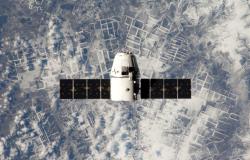Humanitarian Connectivity in Crisis

Aaron Martin and Quito Tsui on the risks of an unprepared humanitarian sector utilising low earth orbit (LEO) connectivity for critical humanitarian activities.
There is a notable common thread in many Starlink connection origin stories. An actor makes a plea on Twitter (now X) and a nod from SpaceX head, and Starlink’s ultimate controller, Elon Musk results in the bequeathment of connection. Ukraine’s use of Starlink happened much the same: a post from Ukraine’s then deputy prime minister Mykhailo Fedorov requesting Elon Musk provide access to Starlink. Days later he obliged. Starlink connections have since sprung up across Ukraine — the local government itself has described Starlink as the ‘blood of our entire communication infrastructure now’, while Musk has declared Starlink the ‘backbone of the Ukrainian military.’ The story for humanitarians in Gaza starts similarly. A public message calling for Starlink, a response of support from Musk, and a chorus of interest from several prominent humanitarian leaders. But it took nearly a year to produce a single connection. And now, almost two years after Musk first announced that Starlink would provide connectivity in Gaza, no more connections have been made.
Connecting in crisis
The significance of connection is heightened in humanitarian contexts. Already connectivity is a foundational infrastructure the world over; for humanitarians, access to the internet is an increasingly integral element of their work. Reliance on connectivity to administer vital aspects of humanitarian operations, issue emergency communiques, and support engagement with impacted individuals renders connectivity lifesaving for forcibly displaced people and essential for the humanitarian actors that support them. Within conflict settings the role of telecommunications networks is not static: in one instance they can be used by different actors in conflict to access information and for communication purposes, and in another instance they may be used by parties to conflict seeking a combat advantage. Service restrictions (i.e. internet shutdowns) are a common feature in forced displacement contexts, mobilised by autocratic governments and often resulting in access limitations for marginalised communities.
Private sector providers of low earth orbit (LEO) connectivity — of which Starlink is the market leader — have pitched their products to humanitarian actors whose uptake has occurred with minimal analysis of how this may impact their ability to protect affected communities and deliver aid according to humanitarian values such as neutrality, impartiality, and independence. A small but growing body of evidence has shed light on the interplay between private sector telecommunications, crisis, and conflict. However, the humanitarian sector is yet to confront the political economies and novel risks emerging from new entrants in the humanitarian connectivity market, and the amplification of recently observed risks resulting from placing humanitarian infrastructure at the whims of controversial private organisations.
That oversight may be in part due to the national security leaning of LEO satellite discussions. In April this year, for example, the US Congress held a hearing on Chinese aims in space, specifically noting China’s growing LEO capacity including the focus on creating “China’s Starlink” in Project SatNet. China’s ambitions for space connectivity are no secret and its plans for a Chinese mega constellation of LEO satellites are being carried forward by several state-backed endeavours; Qianfan, Guowang and Honghi-3. Qianfan has already had some success, launching eighteen satellites in August 2024. Despite analysts suggesting China is still a long way from Starlink’s dominance, fear of China’s investment in LEO satellites has prompted not only the US, but also Europe, to consider its own investments into the technology. The European Union has launched the €10.6 billion IRIS² project focused on LEO and MEO (medium earth orbit) satellites, which will be delivered by a consortium of private sector and EU actors. Starlink is set to face competition from elsewhere too. UK-based Euteslat OneWeb has 630 LEO satellites and was briefly considered as an alternative to Starlink in Ukraine. Meanwhile Jeff Bezos, head of tech giant Amazon, has entered the fray with Project Kuiper, launching its first LEO satellites in April this year.
For humanitarians, conversation around and indeed exposure to LEO technologies has come primarily via Starlink. NetHope, a humanitarian network that facilitates partnerships between humanitarians and tech providers, offers a course introducing humanitarians to Starlink with the aim of allowing them to access what NetHope describes as Starlink’s ‘unparalleled impact in humanitarian and development contexts.’ In theory this may be the case — the absence of resource-intensive on-the-ground infrastructure, and high-speed connection of LEO capabilities appears a game changer for humanitarians operating in remote settings, or contexts where connectivity lines have been damaged or destroyed. In practice this has been more convoluted. Tensions between private and philanthropic intentions, as well as humanitarian and militarised applications are apparent. Following the destruction of Hurricane Helene, parts of the Southeastern US received Starlink devices from both private and government sources. Though initially free for the first 30 days, normal subscription charges were then applied. This temporary window of relief reinforces the commercial undertones of Starlink deployment where assistance is not circumscribed by need but rather more amorphous corporate interests. Equally, political pressures and disagreement have resulted in vast amounts of political red tape that means LEO connections are not always straightforward to realise. Starlink entered Sudan after the Rapid Support Forces (RSF), a paramilitary outfit, suspended telecoms provision to areas in its control. Routine internet shutdowns and other disruptions meant that Starlink was one of few reliable sources of internet access, a potential boon to frustrated users. But the co-option of Starlink devices by the RSF, and ensuing threats by Musk to shut down the service, demonstrate the precarity of private sector control over LEO satellite users and the vulnerability of populations who become dependent on the very same devices. Though connection did in fact continue, the perilousness of possible disconnection left humanitarian organisations and civilians reeling.
The humanitarian connectivity conundrum
Humanitarians must therefore understand how these digital dependencies disrupt their digital and operational sovereignty, limiting humanitarian control of operation-critical communication pipelines. The woes of Starlink connectivity are not prescriptive but they are a harbinger of much bigger clashes to come. As humanitarians seek to use these tools to both connect themselves and enable others to connect, they brush up against the complexities of the connectivity industry whose underlying value chain involves a wide number of actors with potentially differing interests to humanitarians. Facilitating access to internet services for the people and communities humanitarians serve—so called “connectivity as aid”—requires humanitarians to ensure that they can do so in ways which uphold humanitarian principles, meet ethical requirements, avoid generating or exacerbating harms, and do not create perceptions of or actual conflicts of interest. This is especially true where internet service providers (ISPs) hold military contracts or provide services to parties to conflict or perpetrators of violence, where concentrations of power may pose a threat to democratic interests, or where corporate leadership appears antagonistic to the aims and objectives of development aid. As LEO service adoption grows in aid and conflict zones, democracies fracture, and geopolitical divides widen, the uncertainty around reliable provision of critical tools for humanitarian communication will only grow.
Indeed, all this leaves humanitarians in a bind. As of June 2024, over 120 million people were forcibly displaced due to “persecution, conflict, violence, human rights violations or events seriously disturbing public order”.Decision makers desperately need better tools for due diligence and risk mitigation, and support to develop a more nuanced understanding of the potential risks stemming from partnerships with ISPs including LEO connectivity providers.
The humanitarian sector seeks approaches to expand internet access for forcibly displaced people that uphold humanitarian principles, are in accordance with human rights and other relevant international laws and instruments, and meet the needs and priorities of communities safely and securely. Increasingly, they are also considering what privately provisioned connectivity means for concepts of sovereignty in humanitarian space. The salience of these considerations is especially critical where humanitarians are dependent on a single provider for services or where budgetary realities mean they must rely on pro bono technologies and services from private companies as part of corporate social responsibility initiatives, which are often problematic and a trend that is certain to grow in the increasingly restricted funding environment for foreign aid. For humanitarian actors to succeed in providing safe and protective connectivity to affected communities, they must be able to navigate these dilemmas.
Questions for humanitarians to consider
Amidst the entrance of a growing array of state actors, the backdrop of geopolitical tensions surrounding digital technology provision and adoption in the US, China, EU, and elsewhere, the protection and organisational mandates of humanitarians is susceptible to erosion by the militarised and privatised capture of LEO connectivity. With only a handful of actors, all of whom non-humanitarian, able to provide this critical access, humanitarians need to consider the following:
- How are humanitarian organisations adopting new forms of internet service provision to enable “connectivity as aid”?
- What are the benefits of low earth orbit connectivity to humanitarian aid?
- What risks emerge for displaced people, host communities/countries, and humanitarian organisations from an increased reliance on privately provided LEO services by aid actors?
- In what ways might safe and protective humanitarian connectivity contribute to democracy by enabling broader, more inclusive participation?
- How can humanitarian organisations balance the provision of connectivity services as a means for advancing protection with the specific protection risks that may emerge because of the connectivity being provided, or from working with a particular service provider?
Unchecked humanitarian reliance on tools that lend themselves to politicisation risks imperiling the sector yet further. Announcements of a successful Starlink connection in Yemen prompted consternation from the Houthis. Israeli officials initially reprimanded Musk for his agreement to provide connectivity in Gaza, though the government did itself later utilise Starlink connectivity. The divisiveness of LEO networks, and the power imbued within connectivity has led to several clashes over use. Humanitarians, and more crucially civilians, have been left in the lurch of such fallouts. Before humanitarians vest their operational agency in unproven technology and unreliable actors, they must support more research and analysis that better prepares them to protect humanitarian operations from exploitation by the twin threats of national security interests and corporate capture.
When Musk declared Starlink the backbone of the Ukrainian military he also said the quiet part out loud: ‘Their [Ukraine] entire frontline would collapse if I turned it off.’ Humanitarians should take note. Whether it is Starlink or another emerging, non-humanitarian actor supplying the technology, without proper risk analysis and appropriate safeguards, humanitarians risk sleepwalking into the same fate.
Dr. Aaron Martin is an Assistant Professor of Media Studies and Data Science at the University of Virginia, where he works on data ethics, tech regulation, and media policy. This research was funded by the Robert Bosch Stiftung GmbH.
Quito Tsui is an independent researcher and writer focused on technology use in complex deployment contexts.


